A look at how wartime emigres from Europe substantially shaped 1940s Bombay culture forms the focus of Dr Rachel Lee's research
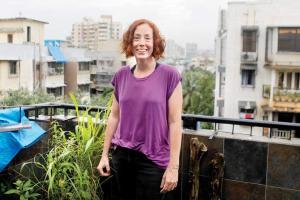
Rachel Lee at her Andheri residence when she visits from Berlin to research the city's art scene catalysed by European war exiles. Pic/Ashish Raje
 Her P&O ship from Marseille docked in Bombay on June 21, 1939. And this city has danced differently ever since. Hilde Holger left Vienna—and 25 members of her Austrian Jewish family, including her mother and sister, later gassed to death in Auschwitz—at a day's notice. This is how her daughter Primavera Boman-Behram heard her Expressionist dancer mother escaped. Her troupe, Hilde Holger Tanzgruppe, practised in secret warehouses to dodge Gestapo spies. Despite denouncing their freestyle body moves as degenerate, schizophrenic Nazis appropriated them for the 1936 Berlin Olympics.
Her P&O ship from Marseille docked in Bombay on June 21, 1939. And this city has danced differently ever since. Hilde Holger left Vienna—and 25 members of her Austrian Jewish family, including her mother and sister, later gassed to death in Auschwitz—at a day's notice. This is how her daughter Primavera Boman-Behram heard her Expressionist dancer mother escaped. Her troupe, Hilde Holger Tanzgruppe, practised in secret warehouses to dodge Gestapo spies. Despite denouncing their freestyle body moves as degenerate, schizophrenic Nazis appropriated them for the 1936 Berlin Olympics.
"Her cousin Mimi Schwarz was shocked when Hilde came to her saying, I leave tomorrow for Paris and Bombay," writes Primavera from London. Holger's getaway was orchestrated by journalist and theatre director Charles Petras. They ended up working not far from each other. Her School of Art for Modern Movement ran from 1941 in Queen's Mansion on Prescott Road, Fort. Down the lane at Carlton House stood Petras' Institute of Foreign Languages, then shifting next to India Coffee House at Kala Ghoda.
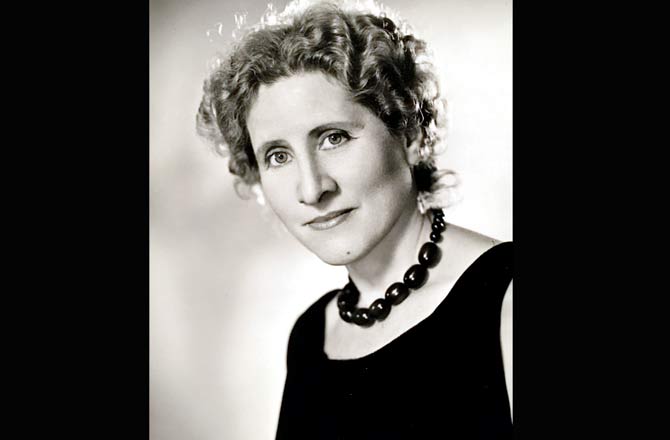
Hilde Holger, pioneer of modern Expressionist and Inclusive dance, occasionally also performed with Ram Gopal, Uday Shankar and Rukmini Devi
The dance route through exile taken by Hilde Holger (1905-2001) centres the research of Berlin-based Dr Rachel Lee. As part of a larger project—Relocating Modernism: Global Metropolises, Modern Art and Exile (METROMOD) at Ludwig Maximilian University, Munich—she explores the intersections of exile and culture in Bombay, one of six cities selected along with Buenos Aires, New York, London, Istanbul and Shanghai.
"I'm looking at places where exiles, mostly from German-speaking Europe, worked with local artists, where exhibitions were held, where they lived, worked and networked," Lee explains. "In Bombay this community was diverse—performers, painters, composers and scenographers." Besides Holger's journey, Lee features the Taj and Green's Hotel as spaces of sociability enabling emigres and Indians to come together, dine, dance, discuss and display.

Holger's dancers on Juhu Beach. Pics courtesy/Hilde Holger Archive © 2001 Primavera Boman-Behram. All rights reserved
"Emigres catalysed important art movements such as the Progressives," says Lee. "They mixed with influential figures to build the art scene in cosmopolitan Bombay, which benefitted from civic contributions by migrants and minorities, especially Parsis and Jews." Unlike New York or London, this artscape was compact, less competitive and easier to navigate.
Performing with the Bodenwieser Company (Holger was Gertrud Bodenwieser's principal dancer before opening her own school), at a Theosophical Congress in Vienna, she spotted J Krishnamurti in the audience and was impressed by his spiritual aura. Holger was as fascinated by classical Indian dance, which proved too demanding when she tried lessons.
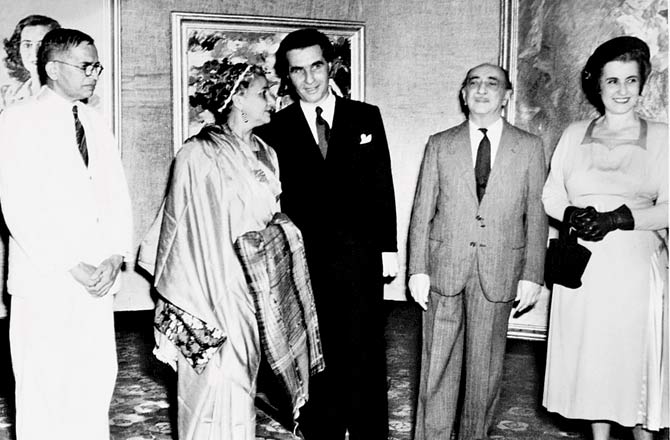
At Walter Langhammer's 1953 solo show at the University Convocation Hall (left to right): VV Oak, Honorary Secretary of Bombay Art Society, Rani Maharaj Singh, wife of the first Indian Governor of Bombay, Langhammer, Sir Cowasji Jehangir and Kaethe Langhammer. Pic courtesy/Chemould Prescott Road
To trace Holger's footprints is to uncover prejudice of the age. Afraid the studio might be mistaken for a brothel, "only Ladies and Children" were admitted to "the foremost professional European School for Creative Dance and Contemporary Ballet in India", her brochure printed.
Primavera says, "When my homeopath father, Dr Ardeshir Boman-Behram, met my mother, he saw how she suffered, thinking she would be deported back to the Third Reich at any moment. He married her, much to the alarm of his political Parsi family."
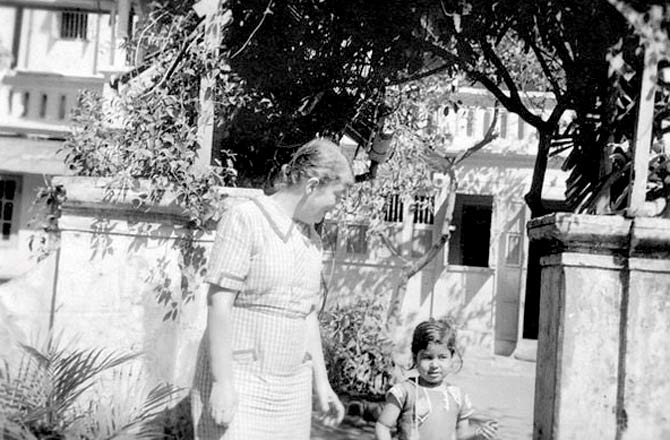
A rare photo of painter Magda Nachman outside her Ridge Road home in the late 1930s. Her exhibition at Charles Petras' Institute of Foreign Languages opened in 1951 only hours before she died. Pic courtesy/Lina Bernstein & Sophie Seifalian
The first Mayor of Bombay, Sir Jehangir Boman-Behram, was Ardeshir's grand-uncle. A later mayor in the family was Congressman Khurshedji F ("Veer") Nariman. "Prima is a cousin on my mother's side," shares Zarine, the daughter of Khurshedji, who lent his name to Nariman Point.
"Once my mother realised Hitler was up to no good, she made plans," Primavera continues. Her tone is laden with the flat understatement she uses to describe growing up desperately lonely, nursing her brother Darius who struggled with Downs Syndrome. That challenged child made Holger pioneer Inclusive Dance in England, a year after her 1948 exit from Bombay. This genre embraces the potential of the disabled.
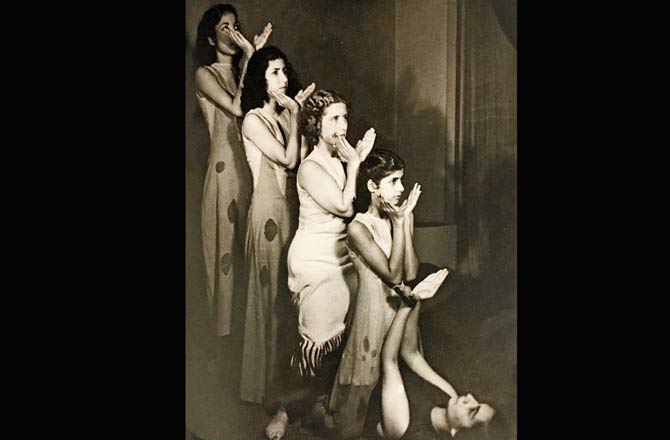
Still from Orchid, set to music by Ravel; Holger standing third from the left
After Holger left, Lillian Bonall's dance school opened at Queen's Mansion. Today, it houses Shireen Gandhy's gallery, Chemould Prescott Road. Her parents Kekoo and Khorshed established Chemould Frames at Princess Street and Gallery Chemould within Jehangir Art Gallery, both hubs of the exiles and Progressives.
Debuting at the Taj, Holger refused to dance on the parquet. That was cabaret area, she was no showgirl. Subsequent stage appearances were at the Alliance Francaise, St Xavier's College, and the Excelsior and Capitol cinemas. Initially, she was considered uber radical. Soon, though, The Evening News' December 2, 1939 edition reported hers was "a terpsichorean treat, a vivid personality expressed in vigorous grace and rhythm".
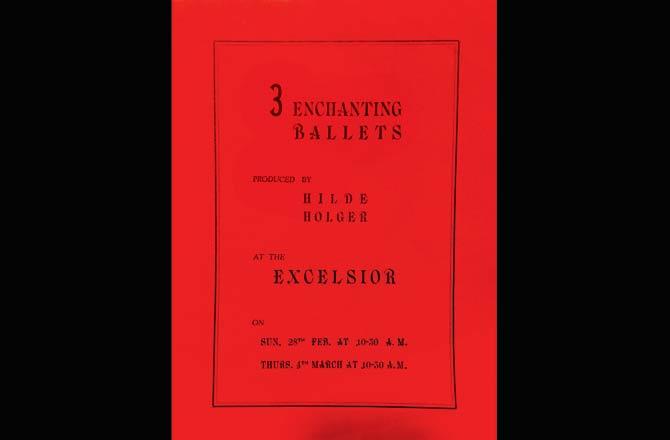
Brochure announcing 3 Enchanting Ballets, produced by Hilde Holger. Her name on the studio's dance programmes often appeared with collaborators like Magda Nachman and Shiavax Chavda of the Bombay School who became one of the most prominent Indian painters of his generation
An accomplished dancer and sculptor of international acclaim, Primavera confesses, "I studied with my mother when young, but we didn't get on in her classes. She was tough, thinking that prepared me for adversity. Friends say I don't know how to have fun. Listening to lectures by children of Holocaust survivors, I find this a common reaction." Holger's pupils in England included Lindsay Kemp, who went on to train David Bowie and Kate Bush.
Bombay reaped legendary aesthetes from "Hitler's bounty to India", as painter Krishen Khanna puts it. Their Bombay years coincided with immense pre-Independence turmoil. They contributed in ways continuing to impact generations— like Akashvani's enduring signature tune that starts the day on All India Radio. Composed by Czech pianist Walter Kaufmann, Director of European Music at AIR, its tanpura accompaniment was by Dinkar Rao Amembal.
A versatile genius, Kaufmann founded the Bombay Chamber Music Society. He wrote background scores for the movies Ek Din Ka Sultan and Prem Nagar, besides assisting immigrants like scriptwriter Wilhelm Haas who stayed at Lesser's Boarding House in Soona Mahal on Marine Drive. As did filmmaker Paul Zils, above Parisian Dairy, now a tame pizzeria after enjoying such vibrant avatars as Talk of the Town and Jazz by the Bay.
Recording Kaufmann's study of Indian classical and folk music (he admired it was "created by heart and intellect") in his book, The Music that Still Rings at Dawn, Every Dawn, Amrit Gangar notes Soona Mahal was an adda attracting flaneurs of the day. Kaufmann lived at Rewa, Maharaja Martand Singh's bungalow off Warden Road.
Lee as well maps the paths of the painter Walter Langhammer, critic-cartoonist Rudy von Leyden and collector-patron Emanuel Schlesinger. Rudy von Leyden arrived from Austria with a doctorate in geology outdone by an abiding interest in art. He frankly reviewed exhibitions for The Times of India and sketched caricatures for The Illustrated Weekly, where Langhammer was art director. Probably the first cartoon short film for Indian producers was Lafanga Langoor, or The Merry Monkey, by the trick photographer Bodo Gutschwager.
Seeing the numbers seeking refuge in India, the British annulled the visa-abolition agreement with Germany and Austria, following the Anschluss in March 1938. Exiles had to assure two administration units, the British in London and British Indian government in New Delhi, that they would pose no security risk nor be a burden. Negotiating, the Jewish Relief Association signed for maintenance and sponsorships. Benefactors like the Sassoons in Bombay and the Ezras in Calcutta extended guarantees.
In a letter to Rudy von Leyden, Krishen Khanna wrote: "Most unfortunate were the events which brought you to Bombay, but our gain was incalculable. The timing seems to have been just right." He meant the emigre presence that decisively moulded groundbreaking movements.
Warm patronage came from a quiet Yugoslavian-Jew. Emanuel Schlesinger fled Nazi incarceration in the winter of 1939, witnessing his family tortured. "Set to sail into Shanghai, when the ocean liner reached Bombay, he fell in love with its harbour, sea fronting boulevards, architecture, European cuisine restaurants, colour, vigour and bonhomie of the people," says Schlesinger's daughter Catherine Gonsalves, a Colaba resident.
Schlesinger stayed on in the city after being detained in Ahmednagar Camp as an Axis bloc foreign national. "Among those internees were physicians, nurses, missionaries and heads of companies he kept in touch with, helping as he could," says Gonsalves. "Passionate about art, he penetrated the Bombay circle, mentoring and giving financial support. Raza, Husain, Ara and Souza were frequent visitors to the house. Almost every Indian artist was represented in his collection, particularly the Progressives, a group he entirely endorsed. Sir Cowasji Jehangir, Boman-Behram, Mulk Raj Anand and Magda Nachman were his good friends."
The life of portrait painter Magda Nachman Acharya (she married MPT Acharya when he went with comrades to Bolshevik Russia scouting for ideological partners in India's fight for liberation) is the theme of a forthcoming book by Professor Lina Bernstein. She remarks: "At Hilde's studio, Magda met painters coming to sketch students, among them Shiavax Chavda, who had studied under Leon Bakst's student Vladimir Polunin, scene painter for the Ballets Russes in London's Slade School of Fine Art. An improbable connection with Magda, who studied with Bakst, a Ballets Russes designer, in St Petersburg!" Chavda's bharatnatyam dancer daughter Jeroo remembers her parents observe that Holger's studio was perennially packed with pupils.
Schlesinger, and Langhammer and von Leyden with their wives Kaethe and Nina, were a familiar trio of formative figures. It was open-house Sundays at the Langhammer home on Nepean Sea Road. They were also board members of the Bombay Art Society, holding its discussions in what became Artists' Centre on Rampart Row.
"I'd love to hear more people's memories of private spaces where exiles developed ideas shaping Bombay differently," Lee requests. "Documents aren't enough to tell these stories."
Author-publisher Meher Marfatia writes fortnightly on everything that makes her love Mumbai and adore Bombay. Reach her at meher.marfatia @mid-day.com/www.mehermarfatia.com
Catch up on all the latest Crime, National, International and Hatke news here. Also download the new mid-day Android and iOS apps to get latest updates
 Subscribe today by clicking the link and stay updated with the latest news!" Click here!
Subscribe today by clicking the link and stay updated with the latest news!" Click here!









